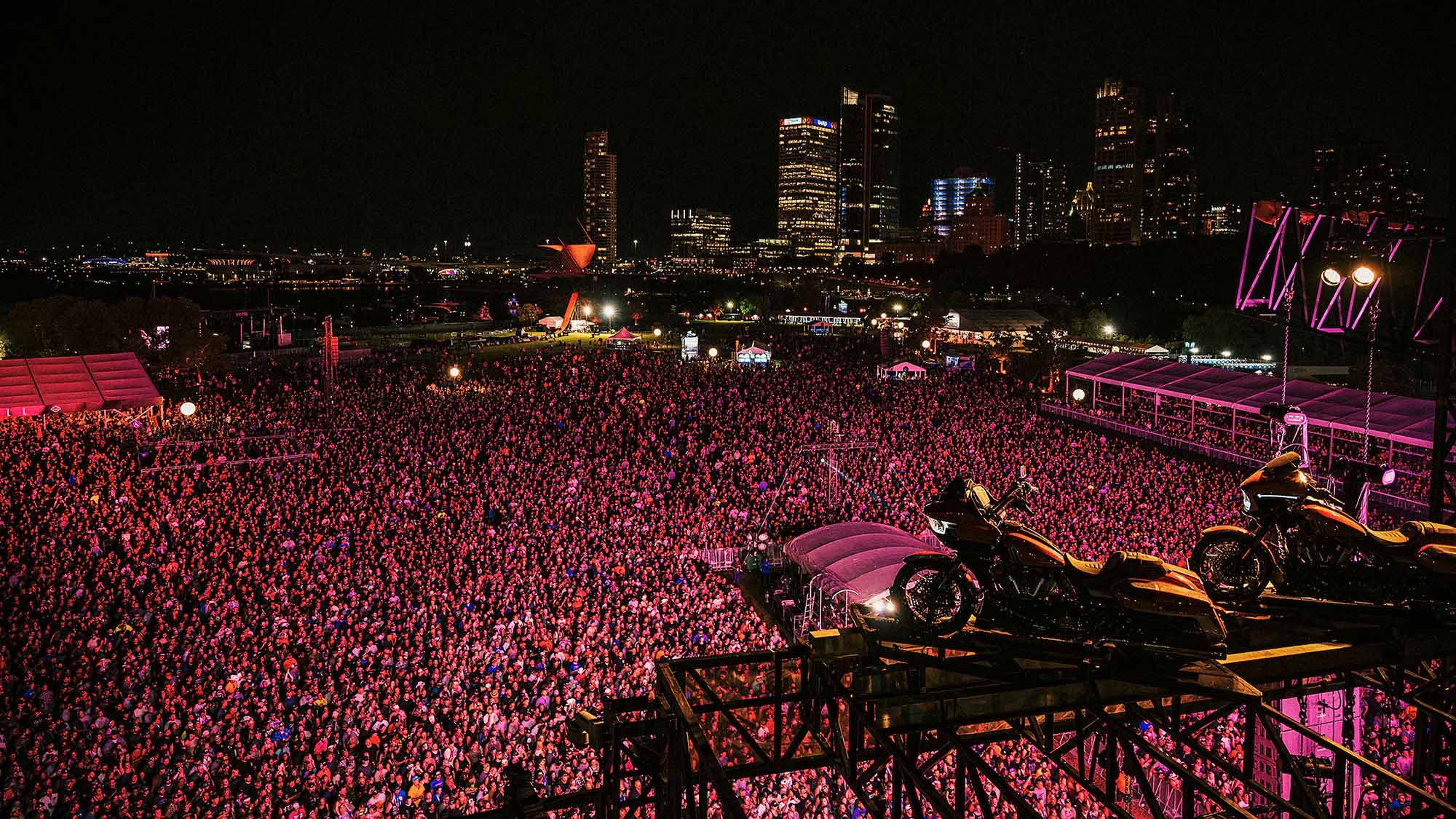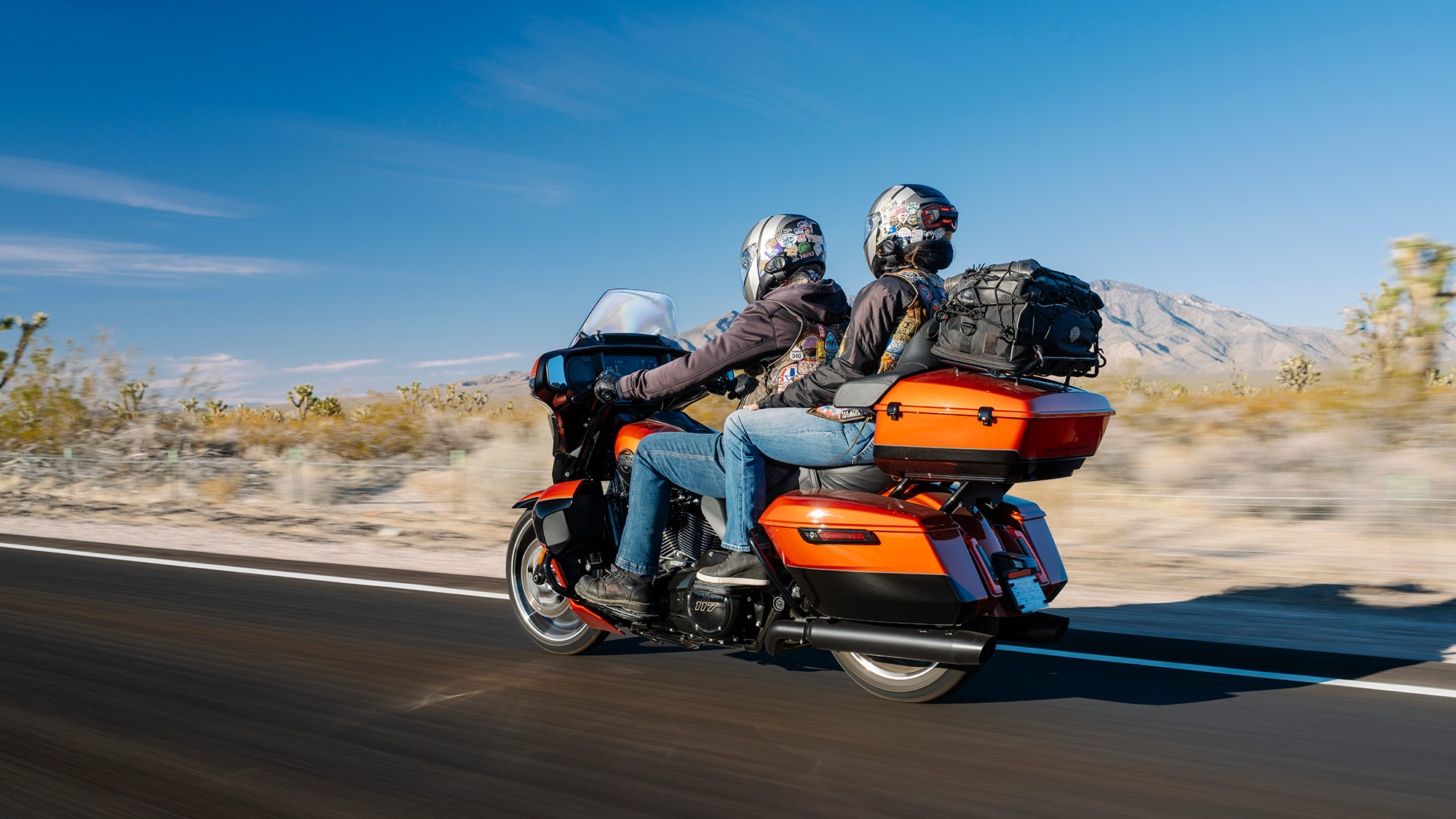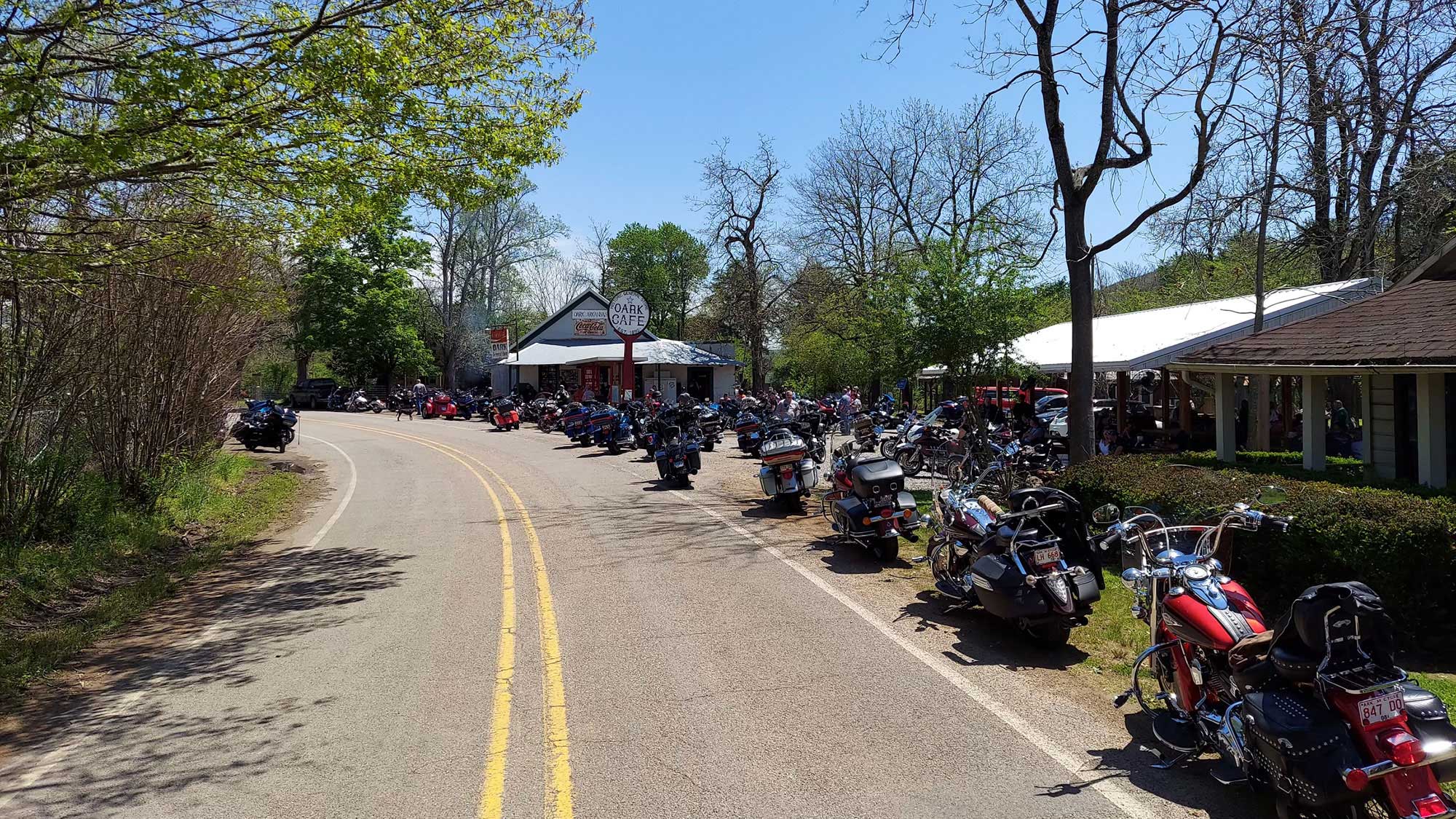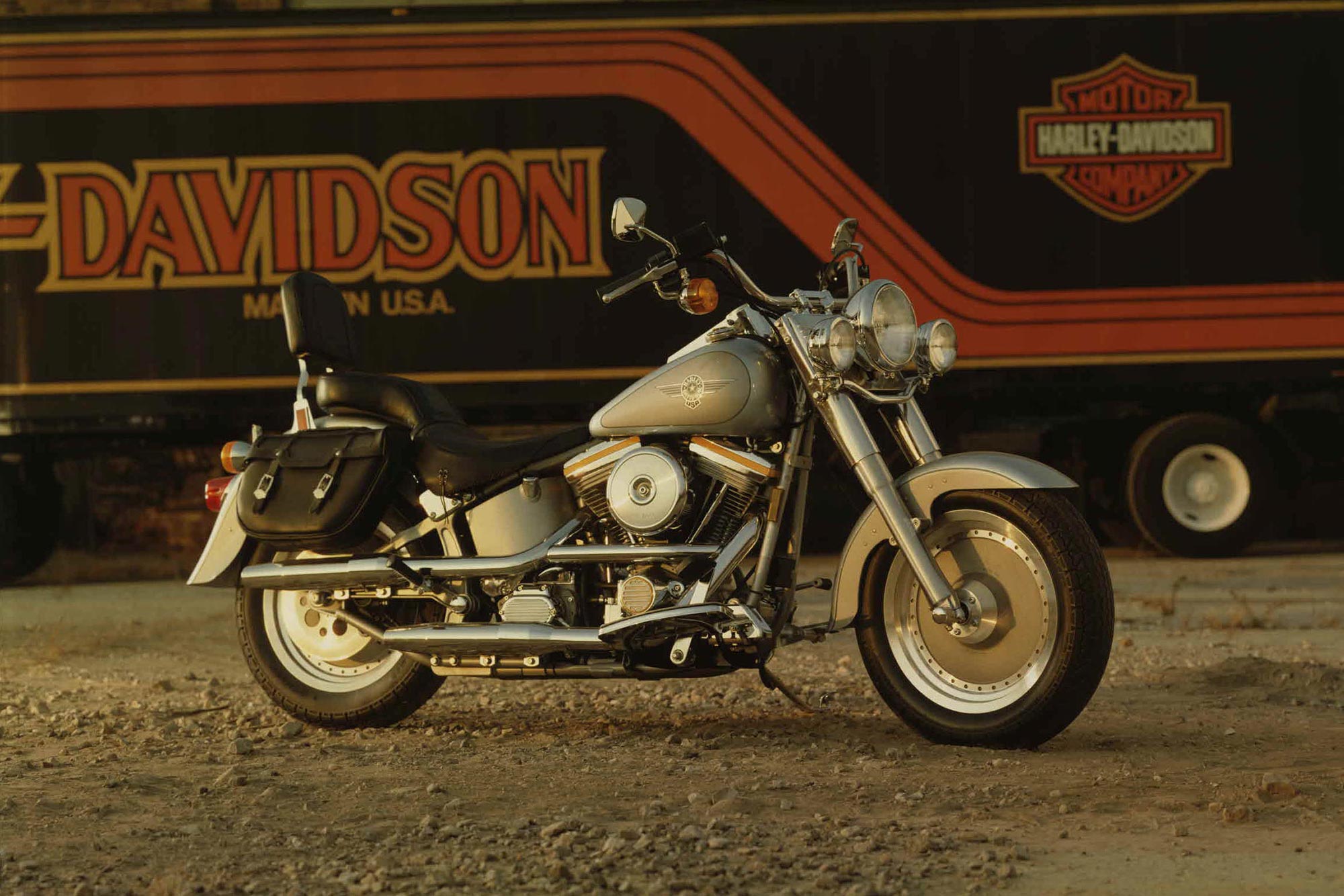
Larger Than Life
Celebrating 35 years of the Harley-Davidson® Fat Boy®.
“Don’t fix what is not broken” is a turn of phrase that Harley-Davidson embodies when it couples heritage with reliability. Since its debut in 1990, the Fat Boy has become one of the company’s most popular models. Designed by stylists Willie G. Davidson and Louie Netz, its image has always been defined by its outright girth – a characteristic that led to its name.
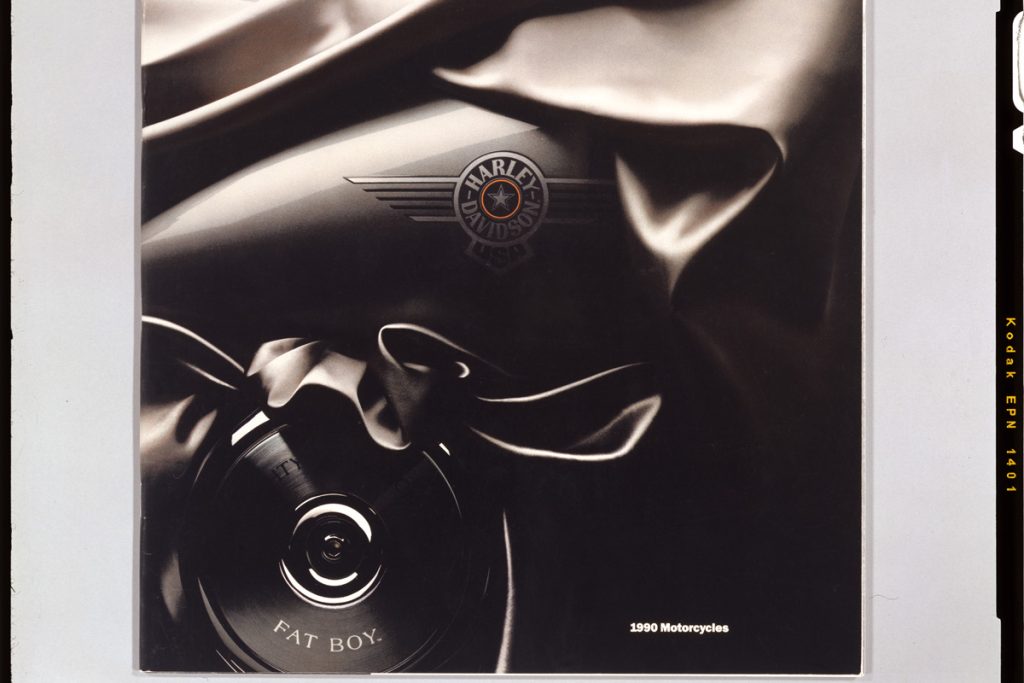
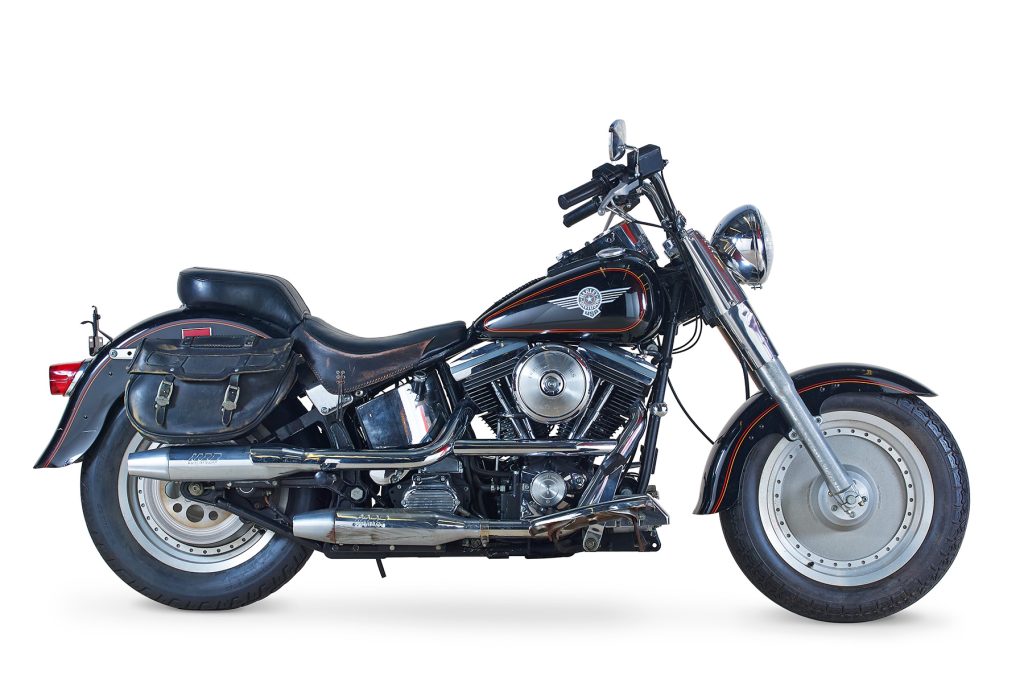
The model’s popularity isn’t confined to the riding community, either. It has appeared in several films and television shows, most famously James Cameron’s 1991 sequel Terminator 2: Judgment Day, and it can also be spotted in Sons of Anarchy, Wild Hogs and CSI: Miami.
When it launched, the Fat Boy made a statement with a silver powder-coated frame to match its monochromatic paint. Yellow trim subtly accentuated the engine, while laced leather gave it a handmade look. It was a true rolling art form that stood boldly upon solid cast wheels in both the front and rear.
From a distance or up close, the burly Fat Boy is unmistakable – the most recognizable aspect being the fuel tank’s two-wing badge. It has been refined over the years but remains mostly unchanged thanks to Willie G.’s design efforts to evoke “patriotism and nostalgia”.
Though nostalgic in nature, the 1990 Fat Boy was the first model to feature shotgun exhaust and gently flared fenders front and rear. For two years prior to its release, it underwent rigorous testing and customer feedback. Willie G. rode a prototype to Daytona Bike Week in 1988 and again in 1989 for additional feedback. These trips were essential to improving the bike and contributed to its eventual popularity.
As the Fat Boy rolls into its 35th year, it has matured technologically while remaining faithful to its original design. For the first 10 years of life, the Fat Boy touted an 80-cubic-inch Evolution® engine. As we celebrated the new millennium, the Fat Boy celebrated the start of its second decade with a balanced Twin Cam 88® engine and an option for fuel injection. The 2000s popularized the Fat Boy further with a divergence from the base platform by welcoming a couple of Screamin’ Eagle® models, Anniversary Editions, and the Fat Boy Lo in 2010. After embracing multiple powertrain upgrades during the Twin Cam era, it underwent its biggest change in 2018, when it received the powerful Milwaukee-Eight® engine stuffed into a totally redesigned Softail® chassis.
History has a way of defining the future, allowing us to study the successes of our predecessors to preserve prosperity in perfection. Nothing has been a truer example than the Harley-Davidson Fat Boy, where it remains uncontested as the icon it is.
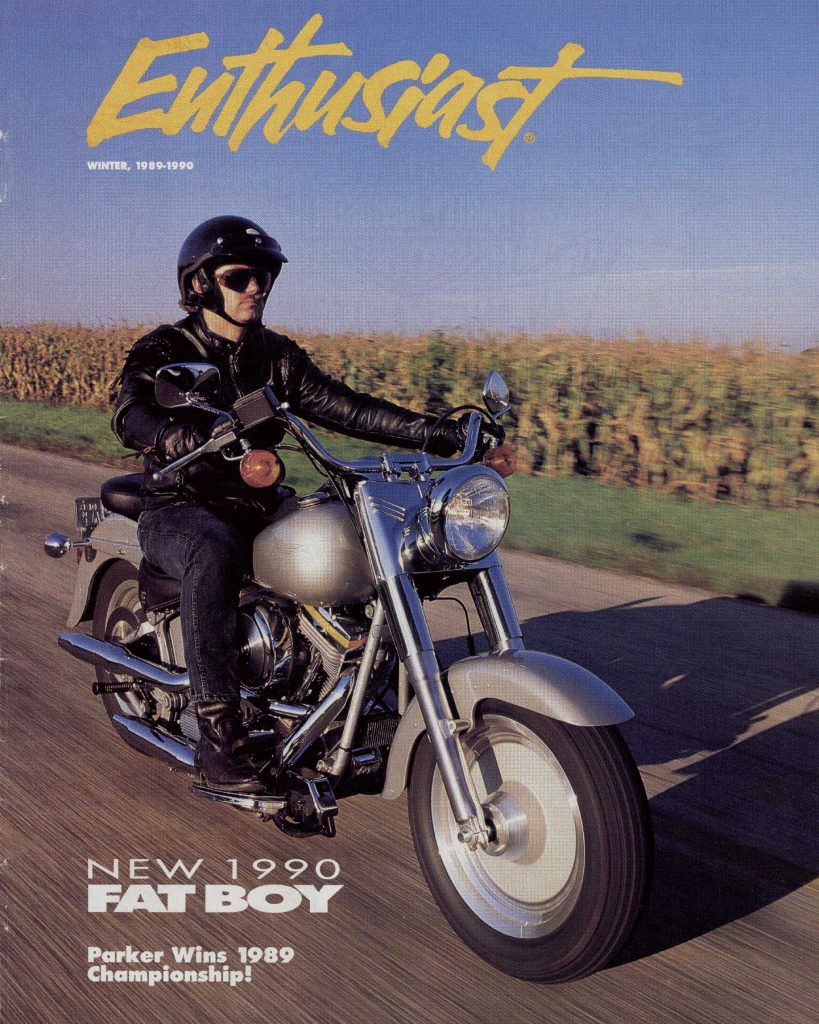
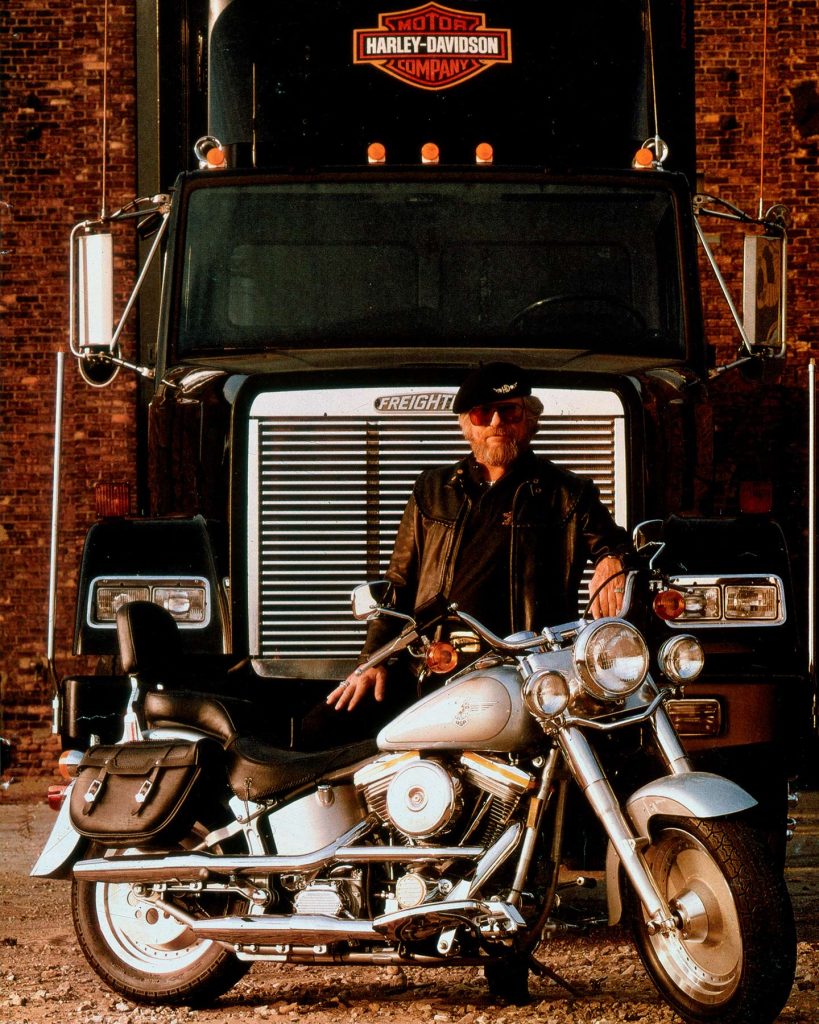
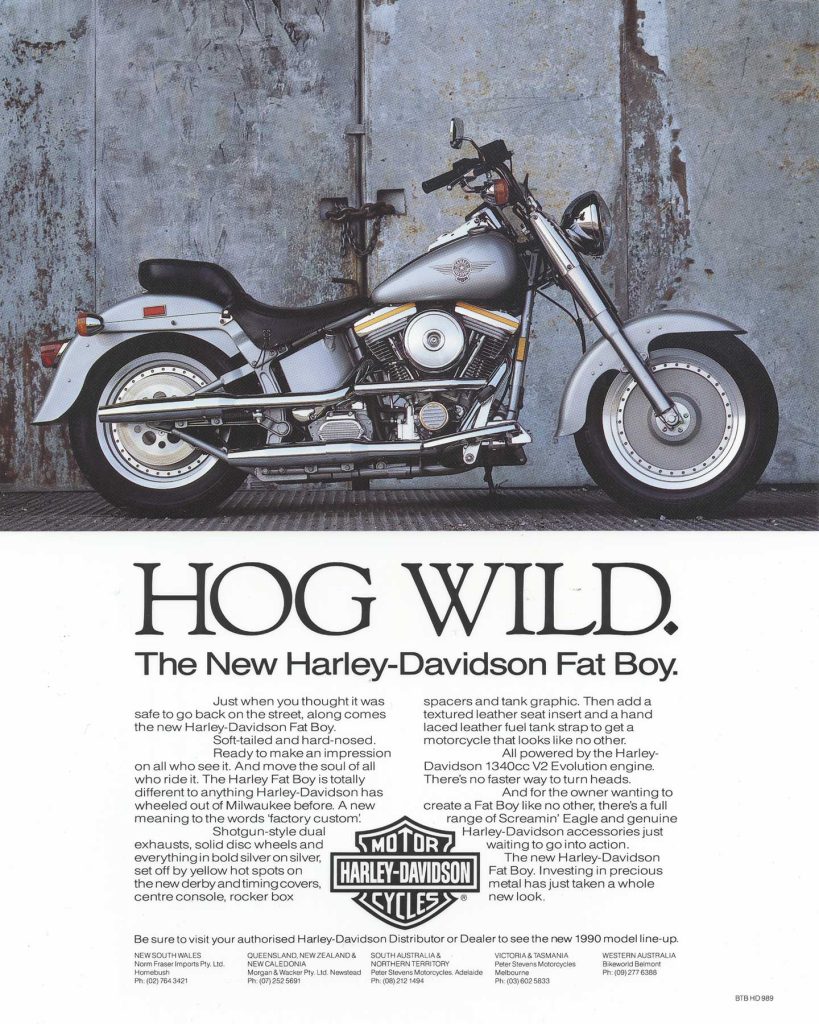
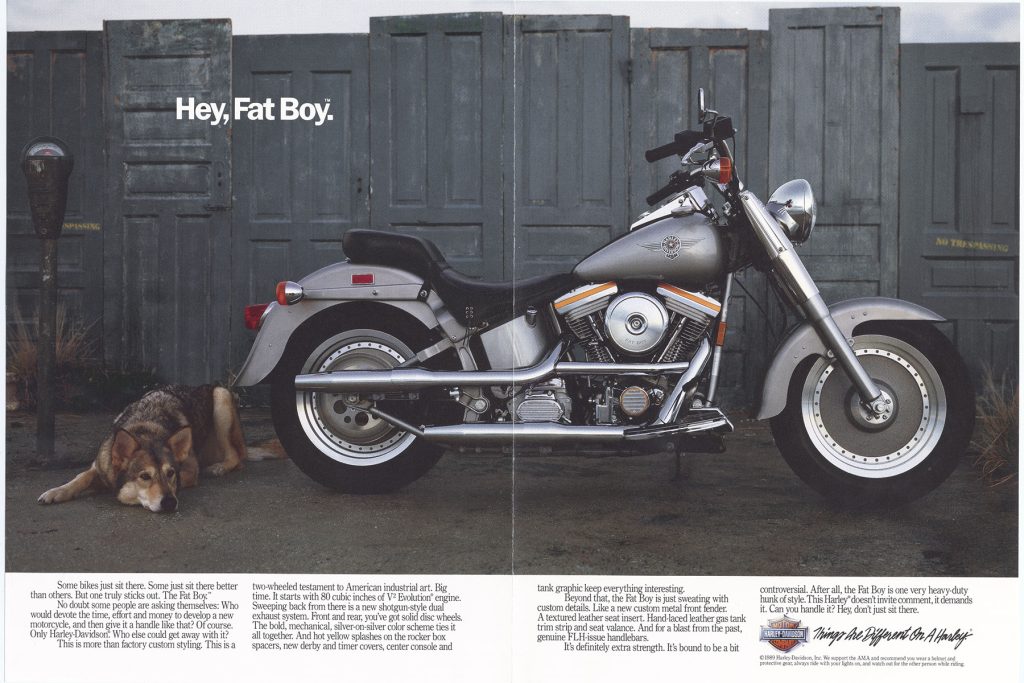
Tags:
Read more tales from the Harley Owners Group!
Events calendar
From multi-day rallies to regional and touring rallies there’s something for everyone in the coming year
New riding routes for 2025: part four
As part of RIDE 365, we select a handful of U.S. destinations each year that are famed for their riding experiences and reward members for completing them. We have 15 great rides for 2025—here are the next three…
